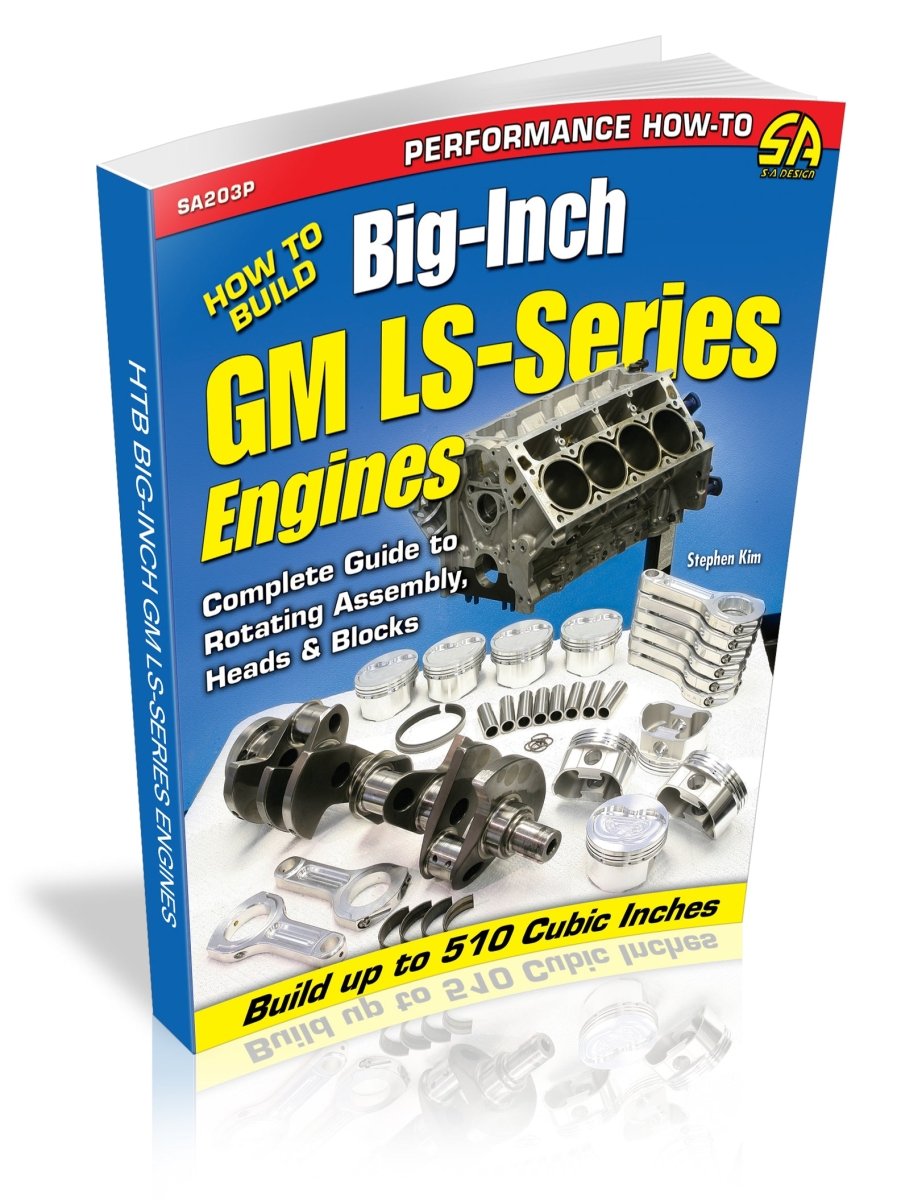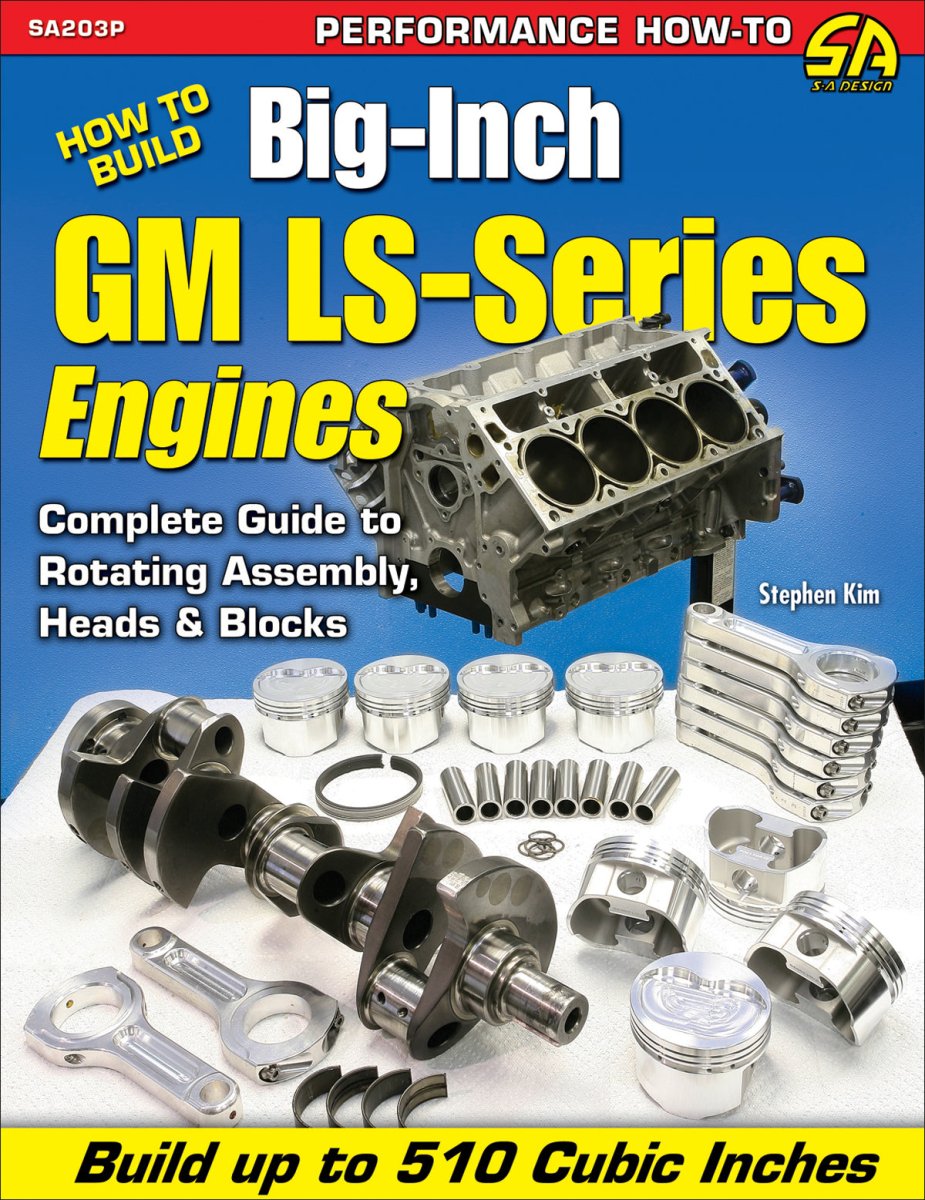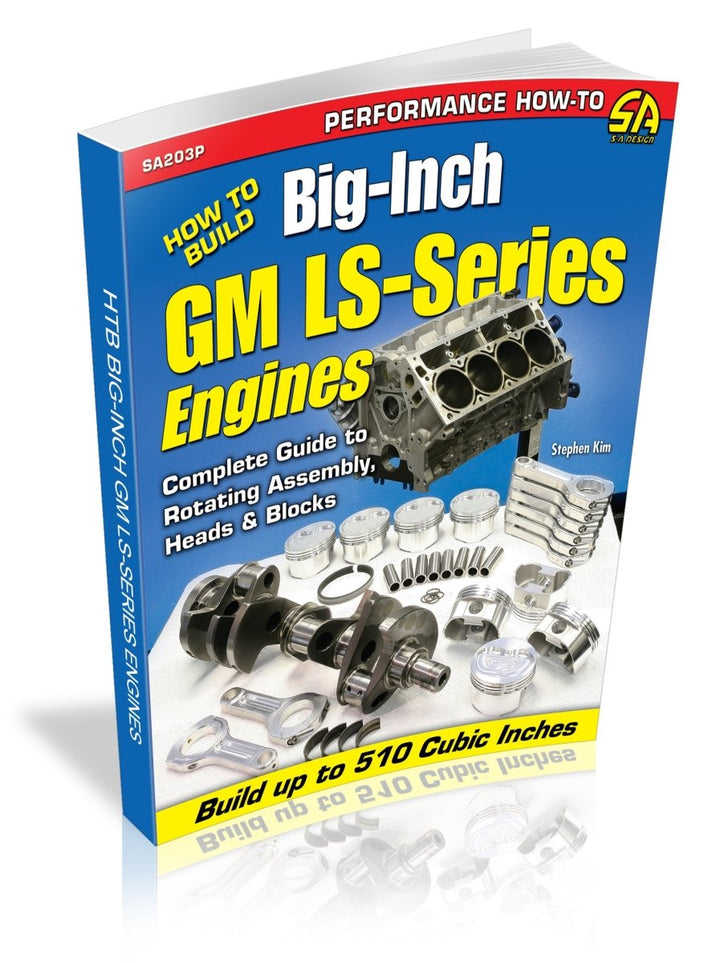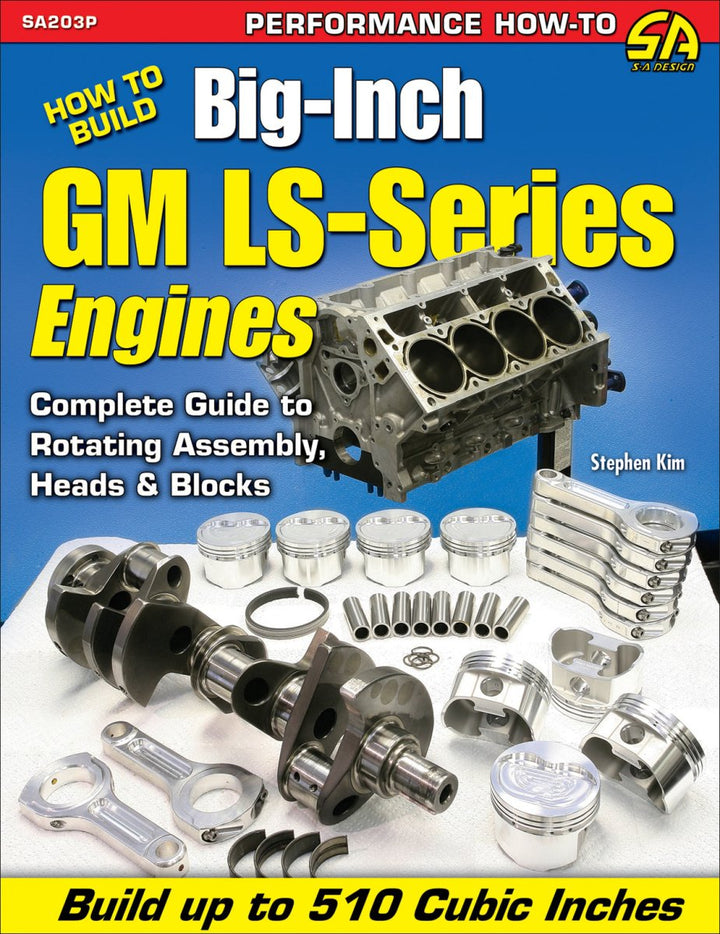The photos in this edition are black and white.
The GM LS-Series engines have made history. These engines produce copious amounts of horsepower and do it very efficiently, and therefore the LS engines have been installed in many GM cars as well as transplanted into hot rods and multitudes of muscle cars. These wildly popular engines have been modified in many ways, and one of the most popular and affordable modifications is stroking an LS engine. By adding more cubic inches, these engines are producing exceptional horsepower and torque.
Author Stephen Kim covers the various models of LS engines, so if you're buying an engine you are able to select the best stroker platform. He also guides you through each crucial step of building a stroker or big-inch LS engine. He starts by discussing the stroker options, the maximum stroke and bore for aluminum as well as iron block engines, and the best cranks, rods, and pistons from various aftermarket suppliers. The budding LS engine builder is then able to select parts or the stroker kit that best fits the particular motor and the budget.
Kim delves into the benefits and drawbacks to stroking the range of LS aluminum and iron block motors. But, he also examines the aftermarket blocks from World, Dart, and GM Performance Parts for stroking. LS engine s are the hottest engine family on the market right now, and for good reason. While there are other LS engine books on the market, this is the only one that specifically addresses increasing displacement as a means of gaining real world usable horsepower.
Pages : 144
Size : 8.5 X 11 (inches)
Format : Paperback / softback
Illustrations : 305 b/w photos
Publisher : CarTech
ISBN : 9781613251645
Product Code : SA203P
Preface
Acknowledgments
Chapter 1: Advent of the GM LS Engine
Design Features
Pushrod Power
Explosive Potential
Chapter 2: Stroking Options
Efficiency
Displacement Defined
Pushing the Envelope
Clearancing
The Power of Cubic Inches
Chapter 3: The LS Engine Family
LS1
LS2
LS3/L92/L99
LS4
LS6
LS7
LS9
LSA
LQ4/LQ9
LY6
L76
Vortec 4800
Vortec 5300
Chapter 4: Engine Blocks
Getting Bored
Factory Aluminum Blocks
Factory Iron Blocks
Aftermarket Blocks
Machine Work
Chapter 5: Crankshafts
Stroking for Displacement
Factory Crankshafts
Cast vs. Forged vs. Billet
Strength
Metallurgy
Overlap
Twist vs. Non-Twist Forging
Heat-Treating the Crankshaft
Knife-Edging the Crankshaft Counterweights
Balancing the Crankshaft
Crankshaft Weight
Dampeners
Manufacturer Choices
Chapter 6: Connecting Rods
Stock Rods
Forging Materials
Rod Shape
Rod Length
Manufacturer Choices
Chapter 7: Pistons
Factory Pistons
Alloys
Skirts
Gas Porting
Wrist Pins
Compression Height
Dishes and Domes
Power Adder Pistons
Custom Pistons
Coatings
Weight
Manufacturer Choices
Chapter 8: Oiling System
Lubrication Basics
Pressure vs. Volume
Oil Pumps
Stock Pans
Aftermarket Pans
Dry Sump Systems
Oil Coolers
Chapter 9: Cylinder Heads
Appetite for Air
Port Volume
Flow vs. Velocity
Valve Angle
Angle of Attack
Valve Seat Angle
Combustion Chambers
Factory Cathedral-Port Heads
Factory Rectangle-Port Heads
Aftermarket Heads
Chapter 10: Camshafts
Cam Effects
Lobe Profile
Duration
Overlap
Measuring Duration
Lift
Piston-to-Valve Clearance
Valve Events
Timing Tricks
Variable Valve Timing
Single- vs. Dual-Pattern
Chapter 11: Valvetrain
Valvetrain Dynamics
Fighting Float
Lifters
Solid Rollers for the Street
Valvesprings
Retainers
Rocker Arms
Rocker Ratio
Pushrods
Timing Sets
Timing Covers
Chapter 12: Induction
Intake Dynamics
Early Stock Intakes
Stock Rectangle-Port Intakes
LS6-Style Aftermarket Intakes
Aftermarket Rectangle-Port Intakes
Carbureted Intakes
Throttle Bodies
Chapter 13: Fuel and Spark
Electronic Fuel Injection
Fuel Pump and Injector Sizing
Carburetors
Ignition
Chapter 14: Proven Stroker Combinations
Full-Race Screamer LSX
Wee Beast LS1
Big Daddy LS2
Welterweight Brawler LS3
Brazilian Stock Car LS3 Motor
Source Guide






